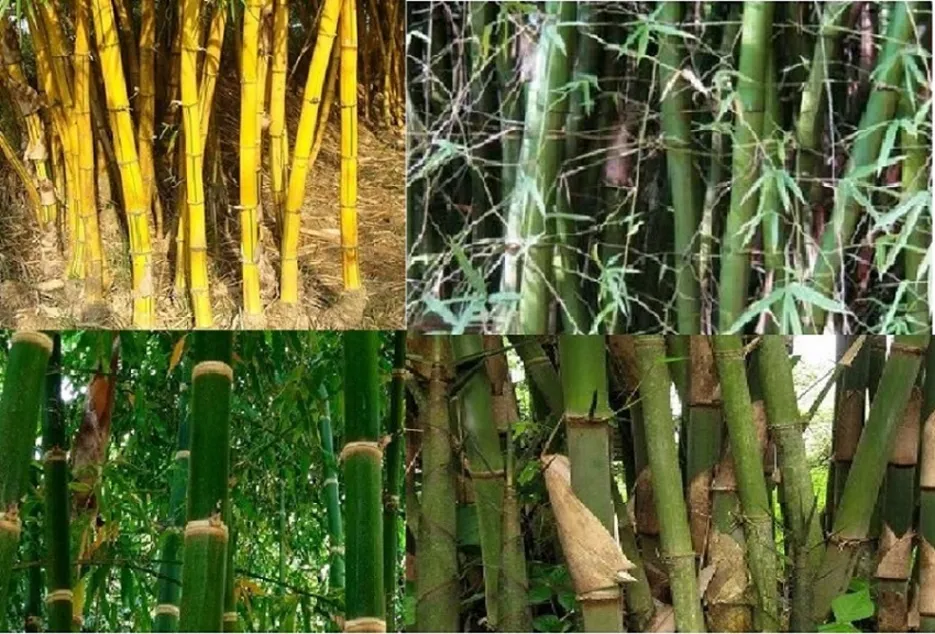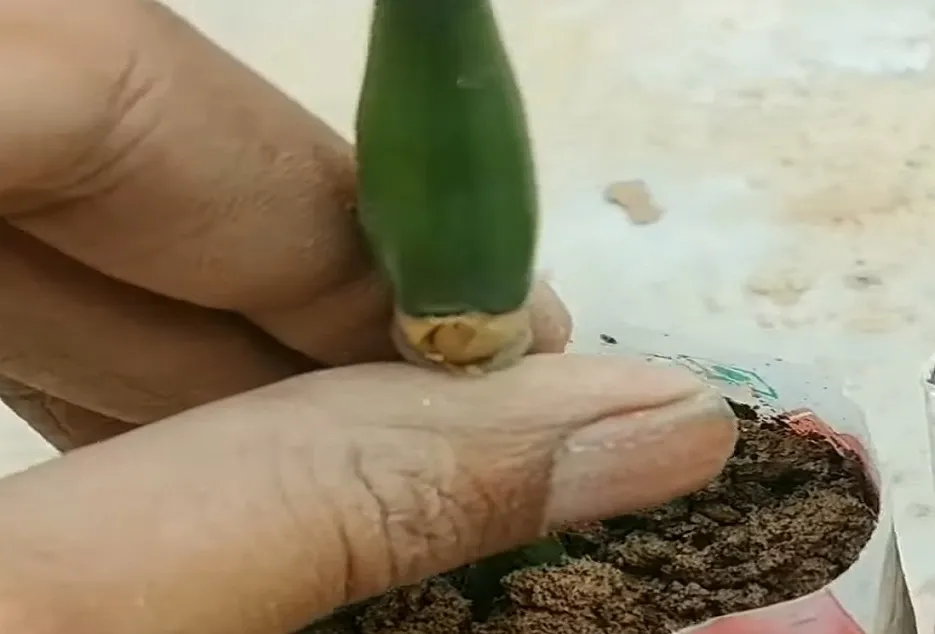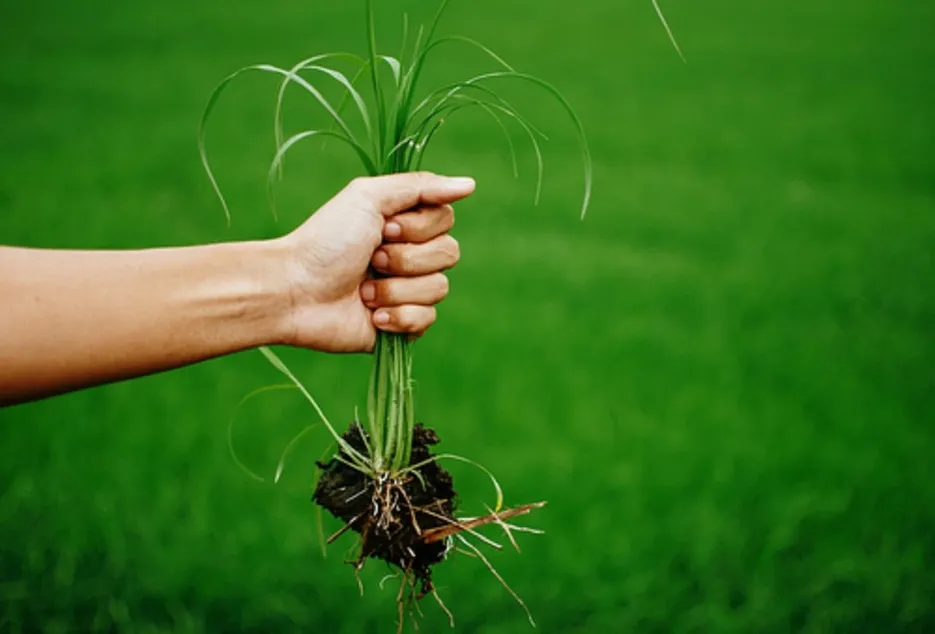 ପଛକୁ
ପଛକୁ

Bamboo is cultivated as an evergreen plant. This is a plant of grass species, there are some varieties of bamboo, whose plants grow up to 90 cm in a day. worldwide India is the second big producer of bamboo production, there are more than 1400 species of bamboo in the entire world, out of which most are found in India, because of government law, bamboo cutting was illegal in previous years. but after the rule change in 2018, now the Forest Act will not be applicable to the harvesting of bamboo, although this has been done only for private land. not forest or government area. farmers can grow bamboo independently in their fields and can also earn good profit. In India, bamboo is mostly cultivated in Arunachal Pradesh, Assam, Manipur, Meghalaya, Mizoram, Nagaland, Sikkim, Tripura, West Bengal, Madhya Pradesh, and Maharashtra, besides bamboo in Uttar Pradesh, Uttaranchal, Jammu and Kashmir, Andaman and Nicobar Islands. It is also found in other states
Different species of bamboo
Different species of bamboo

Bambusa tulda, Dendrocalamus strict, Bambusa vulgaris, Bambusa Nutan, Bambusa bamboos, Bambusa polymorpha, Bambusa pallida, Dendrocalamus brandisii, Ochlandra travancorica, etc. are prominent.


Soil and Climate
Soil and Climate
In many states where farmers are unable to cultivate other crops due to barren land or weather, they can easily do bamboo cultivation in such places. According to agricultural experts, bamboo plants do not require any special kind of fertile land. It can be easily planted in all types of soil climates. It grows successfully in the climate of evergreen forests as well as in dry areas. Bamboo grows well in sandy soil with good drainage. Some species of bamboo can be grown well in loamy soils in moist places near water sources.


Nursery preparation
Nursery preparation
Bamboo can be planted from seed, cuttings, or rhizomes. Its seeds are expensive, and the price of bamboo also depends on the variety and quality of the plant. The planting of bamboo plants is done on vacant land or as a fence on the side of the field because its seeds are expensive and it is a bit difficult to plant it from seeds, so bamboo is cultivated with cuttings, so the farmer should dig at least one-year-old buds with roots and make a one-meter-long pen and plant it between June to August. needed. Therefore, pits of the size of 1 * 1 feet should be planted at a depth of 30 cm. In the pits, the soil should be filled with cow dung and soil in a ratio of 40: 60, it is necessary to give proper irrigation in the nursery stage. Bamboo seedlings can be kept in a nursery for one year. After that, it can be planted in the main field.


Planting
Planting
Remove weeds before transplanting in the fields, make a pit of 0.3 * 0.3 * 0.3 meters at a distance of 5 * 5 meters before the rains for transplanting the cuttings, and use cow dung at the time of planting in the fields. It is better; however, 10 kg of cow dung is required in one acre in 1 year and 150 - 250 bamboo plants can be planted in one acre. Irrigate the plant immediately after transplanting, and irrigate daily for a month (seasonally), after a month, water on alternate days, and reduce it to once a week after 6 months. The bamboo crop is a long-term crop, so farmers can plant short-term crops like fodder crops, vegetables, etc. along with these crops.


Weeding
Weeding
After transplanting, weeding should be done every month around the plant for one year, in the second year in January-February 15 to 30 cm deep hoeing should be done in a circle of two meters near the plants. Similarly, if necessary, the process of earthing should be repeated.


Diseases and insects
Diseases and insects
Generally, the effect of pests or diseases on bamboo plants is less, but termites, scales, aphids, mealybugs, and beetles can sometimes damage the crop according to some areas, for their treatment, you can use fungicide and insecticide. Based on your experience, you can contact the nearest Agriculture college or Agriculture Centre.


Harvesting and benefits
Harvesting and benefits
Generally, bamboo cultivation is ready in three to four years. Farmers can start harvesting in the fourth year. Some of its varieties re-grow on their own after harvesting. New buds develop in bamboo every year. Therefore, old buds should be cut in two or three years. Bamboo should not be cut. The bamboo should be cut from the second knot at a height of one foot above the ground surface. The bamboo should have about 25 to 35 percent moisture when harvested. The cost of planting one acre of bamboo in five years is about Rs 10000. And its harvesting starts from 5 to 6 years. The yield and income from bamboo plantations increase every year. The cost of a boss ranges from Rs 100 to Rs 600 depending on his age and type. Imports bamboo at Rs 12000 per tonne and India is the second-largest producer of bamboo in the world, farmers can also sell the bamboo directly to the government.


National Bamboo Mission
National Bamboo Mission
To widen the cultivation of bamboo, the Government of India has also formed the National Bamboo Mission. Under which it is giving information and financial assistance to the farmer for bamboo cultivation, which will improve agriculture and the rural economy, bamboo is becoming synonymous with wood and steel, so its demand is going to increase in the coming years. Therefore, the government is giving government assistance of Rs 120 per plant for bamboo cultivation and providing a 50% grant to promote bamboo-related industries.
Online Application Process for National Bamboo Mission
Online Application Process for National Bamboo Mission
➥ First, you must go to the official website nbm.nic.in ➥ On the website, you will see the link to farmer registration above. On clicking on it the registration page will open in front of you. ➥ In the registration form, you must fill the necessary information, which first selects the state, the district then the tehsil, and finally the village. ➥ After this, the information of the financial year where the name of the farmer will have to be entered in the Aadhar card and some information from the bank. ➥ After submitting the information, your registration will be done in the National Bamboo Mission, and you will get the enrolment number. ➥ If farmers cannot register online, they can also contact the concerned officer or nodal officer for more information.


Thank you for reading this article, we hope you clicked on the ♡ icon to like the article and also do share it with your friends and family now!
Thank you for reading this article, we hope you clicked on the ♡ icon to like the article and also do share it with your friends and family now!








